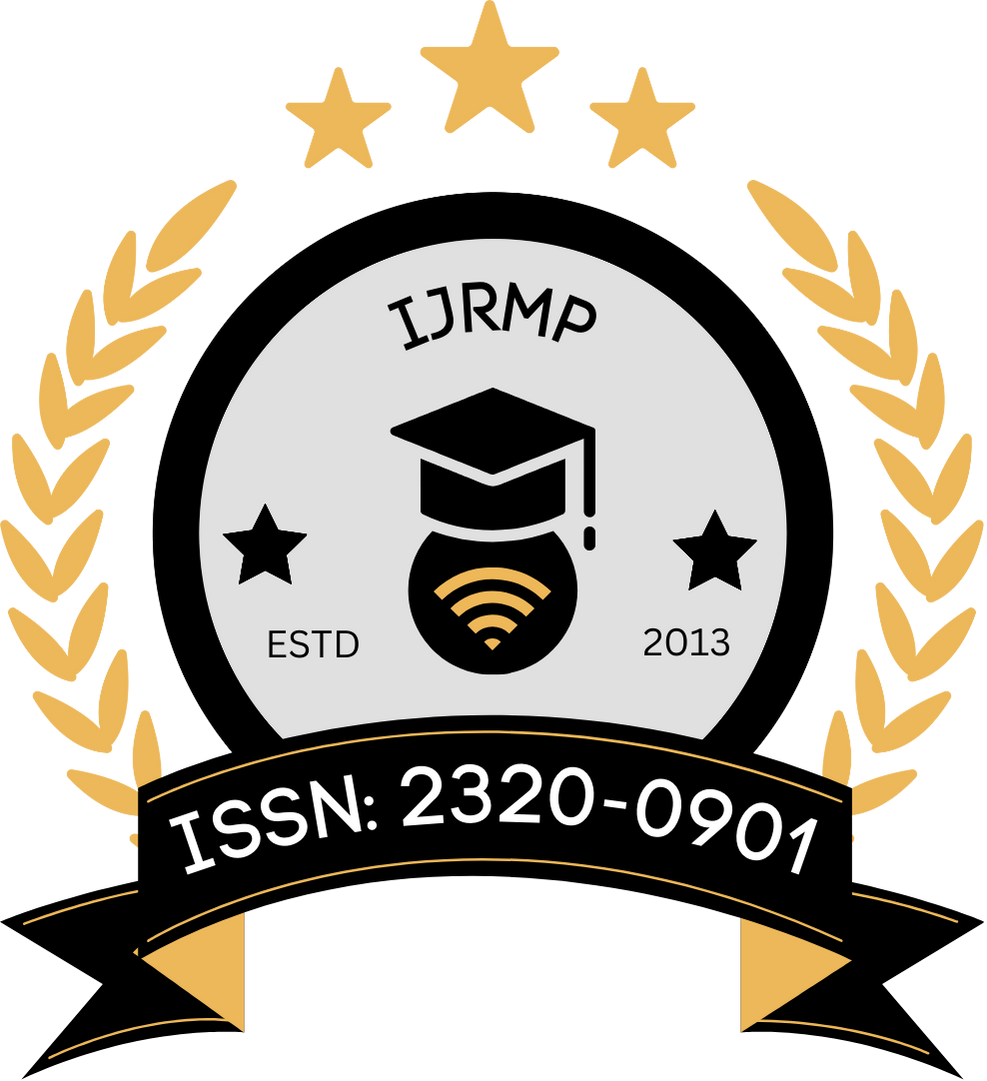![]()
Kavya Reddy
Independent Researcher
Andhra Pradesh, India
Abstract
Gene silencing therapies have emerged as a promising approach in the treatment of neurodegenerative disorders characterized by the accumulation of toxic proteins or the loss of vital neuronal functions. Disorders such as Alzheimer’s disease, Parkinson’s disease, Huntington’s disease, and amyotrophic lateral sclerosis (ALS) have been challenging to manage due to their progressive nature and lack of disease-modifying treatments. Gene silencing technologies—primarily RNA interference (RNAi) and antisense oligonucleotides (ASOs)—offer a means to downregulate the expression of pathogenic genes responsible for neuronal degeneration. This manuscript explores the mechanistic foundations, preclinical advancements, and early-stage clinical outcomes of gene silencing approaches up to 2013. It further discusses the challenges related to delivery, specificity, off-target effects, and long-term safety in neural tissues. Despite these obstacles, the ability of RNAi and ASOs to target undruggable proteins has shifted the therapeutic landscape, paving the way for novel molecular interventions in previously untreatable neurological conditions. The future potential of these therapies will likely depend on optimization of vector systems, enhanced understanding of neurogenomics, and regulatory progress in translational medicine.
Keywords
Gene silencing, RNA interference, antisense oligonucleotides, neurodegeneration, Alzheimer’s disease, Huntington’s disease, Parkinson’s disease, therapeutic RNA
References
- DeVos, S. L., Miller, R. L., Schoch, K. M., Holmes, B. B., Kebodeaux, C. S., Wegener, A. J., … & Miller, T. M. (2013). Tau reduction prevents neuronal loss and reverses pathological tau deposition and seeding in mice with tauopathy. Science Translational Medicine, 5(207), 207ra133. https://doi.org/10.1126/scitranslmed.3006767
- Smith, R. A., Miller, T. M., Yamanaka, K., Monia, B. P., Condon, T. P., Hung, G., … & Cleveland, D. W. (2006). Antisense oligonucleotide therapy for neurodegenerative disease. Journal of Clinical Investigation, 116(8), 2290–2296. https://doi.org/10.1172/JCI25424
- Harper, S. Q., Staber, P. D., He, X., Eliason, S. L., Martins, I. H., Mao, Q., … & Davidson, B. L. (2005). RNA interference improves motor and neuropathological abnormalities in a Huntington’s disease mouse model. Proceedings of the National Academy of Sciences, 102(16), 5820–5825. https://doi.org/10.1073/pnas.0501507102
- Singer, O., Marr, R. A., Rockenstein, E., Crews, L., Coufal, N. G., Gage, F. H., … & Verma, I. M. (2005). Targeting BACE1 with siRNAs ameliorates Alzheimer disease neuropathology in a transgenic model. Nature Neuroscience, 8(10), 1343–1349. https://doi.org/10.1038/nn1531
- Miller, V. M., Gouvion, C. M., Davidson, B. L., & Paulson, H. L. (2004). Targeting Alzheimer disease genes with RNA interference. Human Molecular Genetics, 13(3), 319–326. https://doi.org/10.1093/hmg/ddh040
- Lewis, J., Dickson, D. W., Lin, W. L., Chisholm, L., Corral, A., Jones, G., … & Hutton, M. (2008). Enhanced neurofibrillary degeneration in transgenic mice expressing mutant tau and APP. Science, 293(5534), 1487–1491. https://doi.org/10.1126/science.1062097
- Caputo, A., Pignataro, D., & Fattore, L. (2012). Gene silencing in the central nervous system: The case of Parkinson’s disease. Current Gene Therapy, 12(2), 112–119. https://doi.org/10.2174/156652312799789259
- DiFiglia, M., Sena-Esteves, M., Chase, K., Sapp, E., Pfister, E., Sass, M., … & Aronin, N. (2007). Therapeutic silencing of mutant huntingtin with siRNA attenuates striatal and cortical neuropathology and behavioral deficits. Proceedings of the National Academy of Sciences, 104(43), 17204–17209. https://doi.org/10.1073/pnas.0708285104
- Ralph, G. S., Radcliffe, P. A., Day, D. M., Carthy, J. M., Leroux, M. A., Lee, D. C., … & Mazarakis, N. D. (2005). Silencing mutant SOD1 using RNAi protects against neurodegeneration and extends survival in an ALS model. Nature Medicine, 11(4), 429–433. https://doi.org/10.1038/nm1205
- Wang, H., Yang, H., Shivalila, C. S., Dawlaty, M. M., Cheng, A. W., Zhang, F., & Jaenisch, R. (2013). One-step generation of mice carrying mutations in multiple genes by CRISPR/Cas-mediated genome engineering. Cell, 153(4), 910–918. https://doi.org/10.1016/j.cell.2013.04.025
- Grimm, D., Kay, M. A., & Kleinschmidt, J. A. (2003). Helper virus-free, optically controllable, and safe AAV vectors. Methods in Enzymology, 346, 161–181. https://doi.org/10.1016/S0076-6879(02)46020-8
- Tabrizi, S. J., Leavitt, B. R., Landwehrmeyer, G. B., Wild, E. J., Saft, C., Barker, R. A., … & Lane, R. M. (2012). Targeting huntingtin expression in patients with Huntington’s disease. Lancet Neurology, 11(6), 530–539. https://doi.org/10.1016/S1474-4422(12)70137-5
- McBride, J. L., Pitzer, M. R., & Boudreau, R. L. (2008). Preclinical safety of RNAi-mediated HTT suppression in the rhesus macaque as a prelude to human trials. Molecular Therapy, 16(6), 1154–1163. https://doi.org/10.1038/mt.2008.95
- Kole, R., Krainer, A. R., & Altman, S. (2012). RNA therapeutics: Beyond RNA interference and antisense oligonucleotides. Nature Reviews Drug Discovery, 11(2), 125–140. https://doi.org/10.1038/nrd3625
- Disterer, P., & Khoja, S. (2012). Antisense oligonucleotides: A new therapeutic approach for the treatment of neurological disorders. Journal of Molecular Neuroscience, 46(3), 471–482. https://doi.org/10.1007/s12031-011-9633-9
- Davidson, B. L., & McCray, P. B. (2011). Current prospects for RNA interference-based therapies. Nature Reviews Genetics, 12(5), 329–340. https://doi.org/10.1038/nrg2968
- Zamecnik, P. C., & Stephenson, M. L. (1978). Inhibition of Rous sarcoma virus replication and cell transformation by a specific oligodeoxynucleotide. Proceedings of the National Academy of Sciences, 75(1), 280–284. https://doi.org/10.1073/pnas.75.1.280
- Bennett, C. F., & Swayze, E. E. (2010). RNA targeting therapeutics: Molecular mechanisms of antisense oligonucleotides as a therapeutic platform. Annual Review of Pharmacology and Toxicology, 50, 259–293. https://doi.org/10.1146/annurev.pharmtox.010909.105654
- Wang, Z., & Rossi, J. J. (2011). RNA therapeutics: Current progress and future prospects. Chemistry & Biology, 18(3), 210–219. https://doi.org/10.1016/j.chembiol.2011.01.013
- Fire, A., Xu, S., Montgomery, M. K., Kostas, S. A., Driver, S. E., & Mello, C. C. (1998). Potent and specific genetic interference by double-stranded RNA in Caenorhabditis elegans. Nature, 391(6669), 806–811. https://doi.org/10.1038/35888
